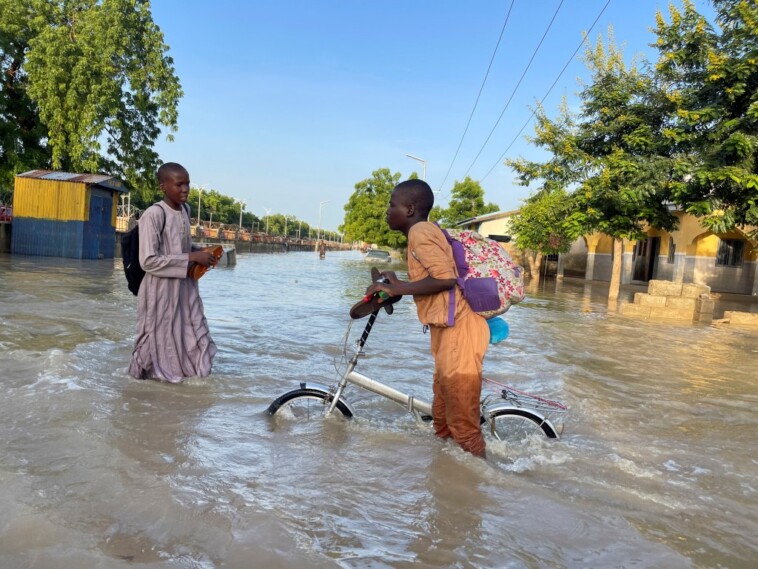A wave of deadly flooding in West and Central Africa left the remains of crocodiles and snakes floating among human bodies.
The torrential rains have killed more than 1,000 people and displaced hundreds of thousands more across the region this year — with Chad, Nigeria, Mali and Niger being especially impacted.
Over 4 million people in West Africa have been affected by flooding this year, a threefold increase from 2023, according to the United Nations.
So far, at least 230 people have been found dead in Nigeria; 265 in Niger; 487 in Chad; and 55 in Mali, which experienced its most catastrophic flooding since the 1960s.
One of the hardest-hit cities is Maiduguri, the capital of the Nigerian state of Borno.
Resident Saleh Bukar, 28, said he was woken up last week around midnight to the sound of his neighbors yelling, “Water is flooding everywhere!”
“They were shouting: ’Everybody come out, everybody come out!”
Some elderly people and those with disabilities were left behind, he said. Those who did not wake up in time drowned immediately.
Aishatu Ba’agana, a mom of three, had to abandon her new baby as she was overwhelmed by the water surging over her house.
“I yelled for my family to help me get my child, but I don’t know if they were able to. I haven’t seen any of them since,” she said.
At the end of this week, 15% of Maiduguri remained underwater, according to local authorities – and the forecasts predicted more rains across the area.
The floods displaced at least 600,000 people in Boro, while at least 100 were killed and 58 injured, the UN reported.
The flooding also killed about 80% of the animals at the Borno State Museum Park and several reptiles escaped.
The city’s main prison was so badly damaged that hundreds of inmates escaped, while the waters tore down the walls of the local police station and some government posts.
Important infrastructure — including two dikes of a dam along Lake Alau — were also swept away.
When the dam failed, 540 billion liters of water flooded the city. Key bridges collapsed and turned Maiduguri into a temporary river.
As recovery efforts continued over one week later, Gov. Babagana Zulum begged for international assistance.
“Our resources are stretched to the limit, and we cannot do this alone,” he said.
Bukar goes back to his home every day to see if the water has receded from his home.
He is currently living at a local school, which is now sheltering 5,000 people.
“I am volunteering to help, but I am also a victim,” he said. “Our people need us. They need help.”
In Niger, the floods impacted over 841,000 people, with over 400 people displaced.
One mother, 50-year-old Harira Adamou, said the floods destroyed her mud hut in the northern city of Agadez.
“The rooms are destroyed; the walls fell down,” she explained. “It’s a big risk to live in a mud hut but we don’t have the means to build concrete ones.”
Adamou, who was widowed four years ago, is now living with her six children in a temporary shelter next to their former hut.
They have not received any aid from the state and are not able to relocate, she noted.
“I understood there was a change in the weather,” she said. “I have never seen a big rain like this year here in Agadez.”
Experts warn that torrential rains and other extreme meteorological events could become the new normal for parts of the African continent.
Africa is responsible for only a small portion of greenhouse gas emissions, but is one of the regions that is most vulnerable to extreme weather events, according to the World Meteorological Organization.
In sub-Saharan Africa, the cost of adapting to extreme weather is estimated between $30-50 billion per year over the next decade, the WMO’s report indicated.
Up to 118 million Africans could be impacted by extreme weather by 2030, it added.
With Post wires








